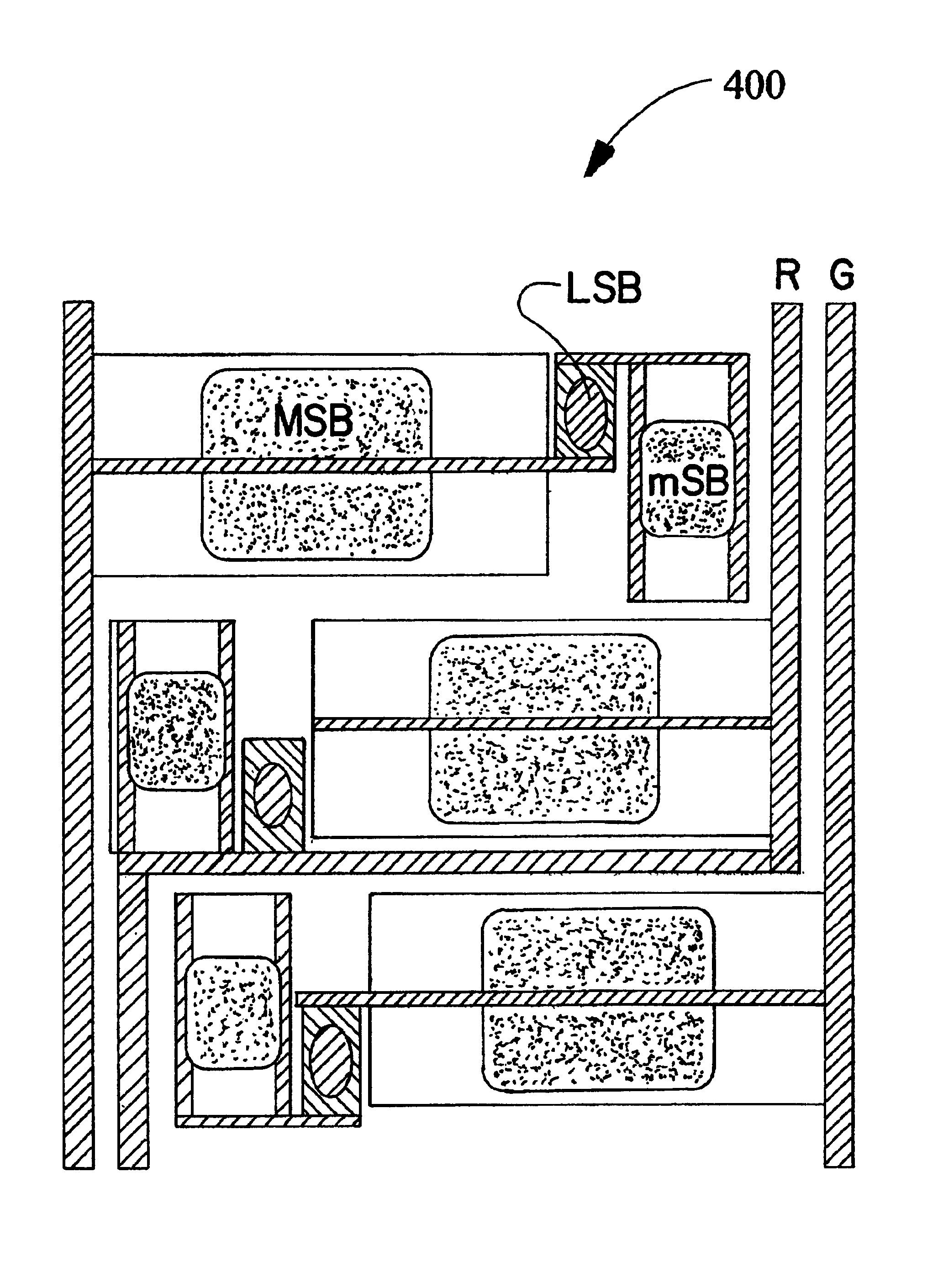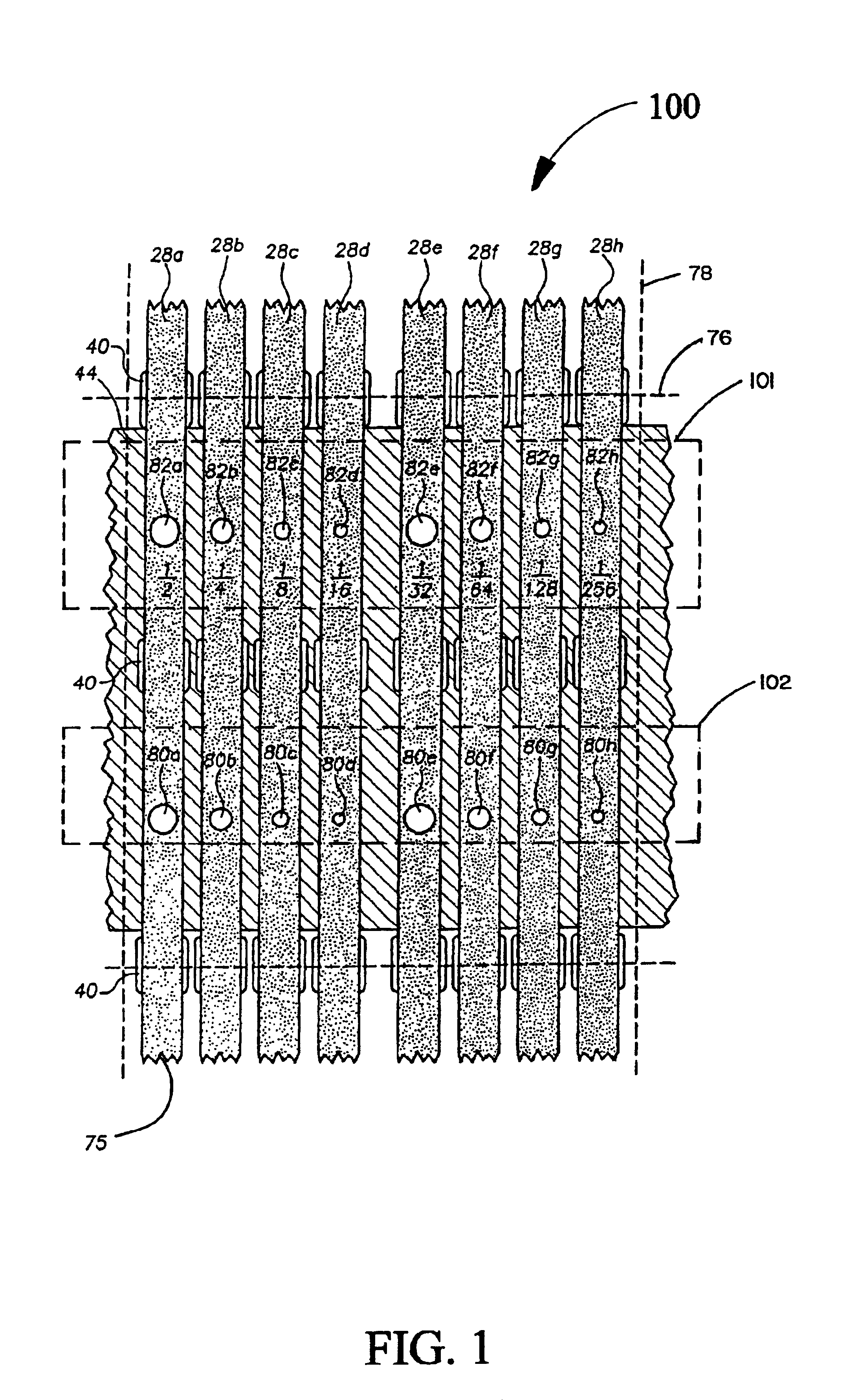Method and apparatus for reducing driver count and power consumption in micromechanical flat panel displays
a technology of micromechanical flat panel display and driver count, which is applied in the field of micromechanical optical switch and flat panel display, can solve the problems of limited commercially viable flat panel display screen technology, limited practical applicability, and limited display range of viewing angles, and achieve the effect of reducing the driver count of micromechanical displays
- Summary
- Abstract
- Description
- Claims
- Application Information
AI Technical Summary
Benefits of technology
Problems solved by technology
Method used
Image
Examples
Embodiment Construction
The present invention is a system for reducing the driver count in micromechanical panel displays, and is a direct improvement with application to U.S. Pat. No. 5,771,321 issued Jun. 23, 1998 entitled, “Micromechanical optical switch and flat panel display” invented by Stern. The prior Stern patent is discussed to show the applicability of this improvement as follows.
The system of the Stern patent is shown in FIG. 1. It provides an optical coupling switch and optical display employing an array of optical coupling switches that overcome limitations of past optical switches and displays to achieve superior display switch speed, display efficiency, compact geometry, and ease of manufacture. The optical coupling switch of the invention and the Stern patent, includes a light storage plate that is adapted to set up conditions for total internal reflection such that light injected into the plate is internally reflected. A light tap is disposed proximal to a coupling surface of a light stor...
PUM
 Login to View More
Login to View More Abstract
Description
Claims
Application Information
 Login to View More
Login to View More - R&D
- Intellectual Property
- Life Sciences
- Materials
- Tech Scout
- Unparalleled Data Quality
- Higher Quality Content
- 60% Fewer Hallucinations
Browse by: Latest US Patents, China's latest patents, Technical Efficacy Thesaurus, Application Domain, Technology Topic, Popular Technical Reports.
© 2025 PatSnap. All rights reserved.Legal|Privacy policy|Modern Slavery Act Transparency Statement|Sitemap|About US| Contact US: help@patsnap.com



